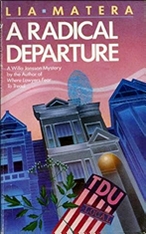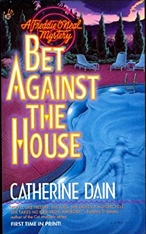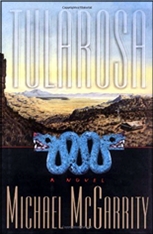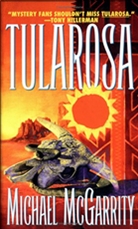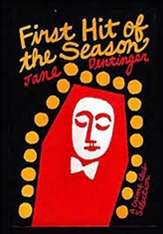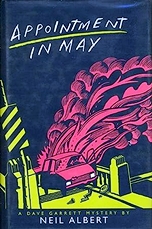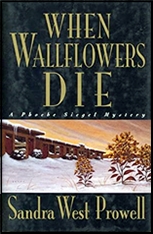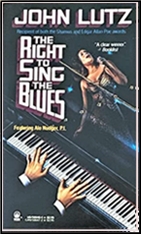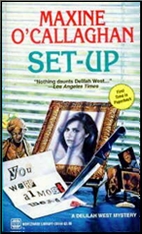A 1001 MIDNIGHTS Review
by Bill Pronzini
THOMAS B. DEWEY – Only on Tuesdays. Pete Schofield #8. Dell 6680, paperback original, 1964.
In addition to the “Mac” series, Dewey also created another private eye, Los Angeles-based Pete Schofield, for a series of paperback originals in the Fifties and early Sixties. The Schofield novels are much lighter in tone, much sexier (as sexy as paperback mysteries could get in that era, anyhow), and lacking the depth and quality of the Mac novels.
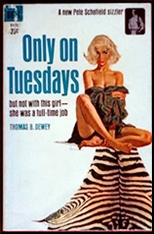
Schofield, who is married to a sultry lady named Jeannie (married private eyes never seem to work out well in fiction), is something of a bumbler and spends as much time trying to crawl into the sack with Jeannie as he does solving crimes. But things keep happening to prevent his connubial bliss — telephone calls, people showing up at highly inopportune moments, squabbles, battle wounds, and various other interventions.
Dewey’s technical skill and sense of humor make this sort of thing work: The Schofield books are exactly what they were intended to be-pleasant light reading — and no more.
Only on Tuesdays, perhaps the best of the series, begins when Pete comes home after a hard day and finds an unemployed actor holding a gun on Jeannie; he also finds. not irrelevantly, a new addition to the family (a dachshund, Hildy) hidden away in the bedroom closet.
It ends with a frantic sailboat race to Catalina Island and another confrontation in the Schofield domicile, this time with a murderer. In between he encounters a missing wife, a wealthy yachtsman named Conway, some highly compromising photographs, and of course plenty of murder and mayhem. The sailing scenes are genuinely exciting and suspenseful, and the byplay between Pete and Jeannie, which in some of the other books becomes a bit tedious, is restrained and amusing.
All the Schoficlds are worth reading; along with Only on Tuesdays, the best of them are Go to Sleep, Jeannie (1959), Too Hot for Hawaii (1960), and The Girl with the Sweet Plump Knees (1963).
———
Reprinted with permission from 1001 Midnights, edited by Bill Pronzini & Marcia Muller and published by The Battered Silicon Dispatch Box, 2007. Copyright © 1986, 2007 by the Pronzini-Muller Family Trust.
The Pete Schofield series —
1. And Where She Stops (1957)
2. Go to Sleep, Jeanie (1959)
3. Too Hot for Hawaii (1960)
4. The Golden Hooligan (1961)
5. Go, Honey Lou (1962)
6. The Girl with the Sweet Plump Knees (1963)
7. The Girl in the Punchbowl (1964)
8. Only On Tuesdays (1964)
9. Nude in Nevada (1965)
